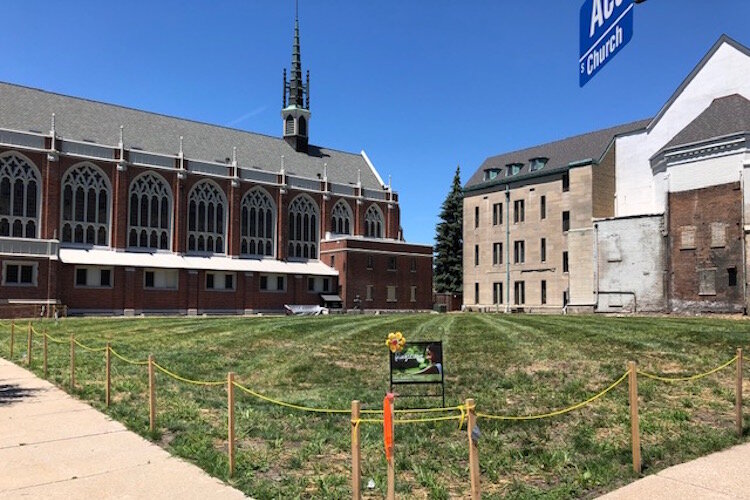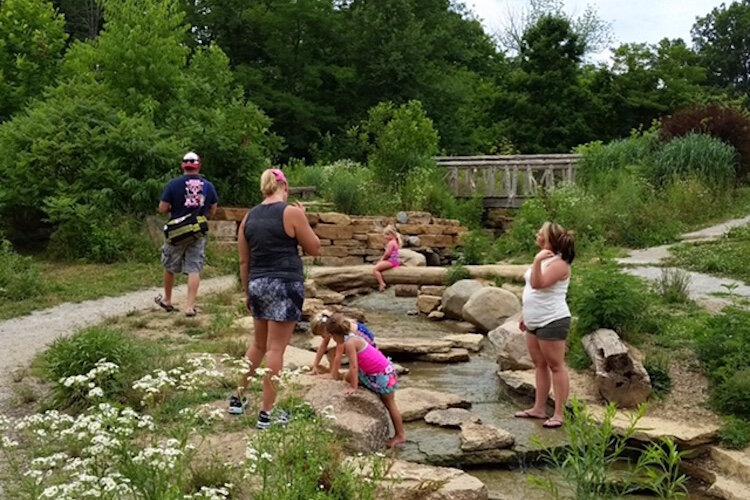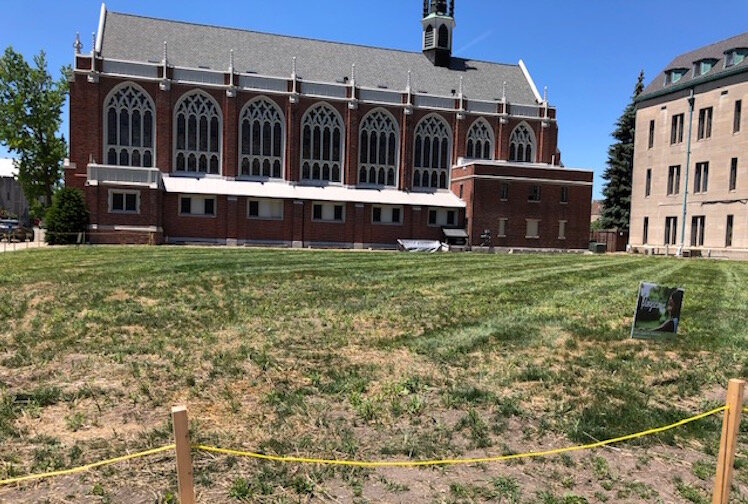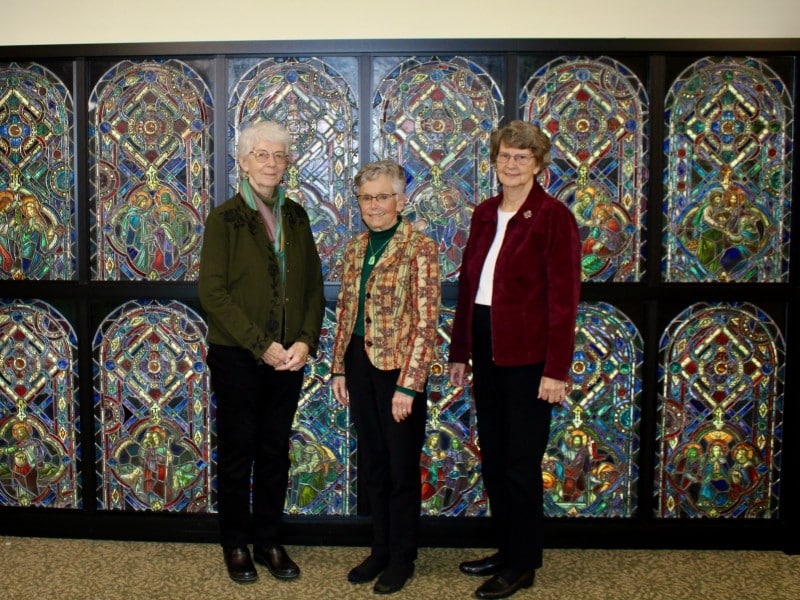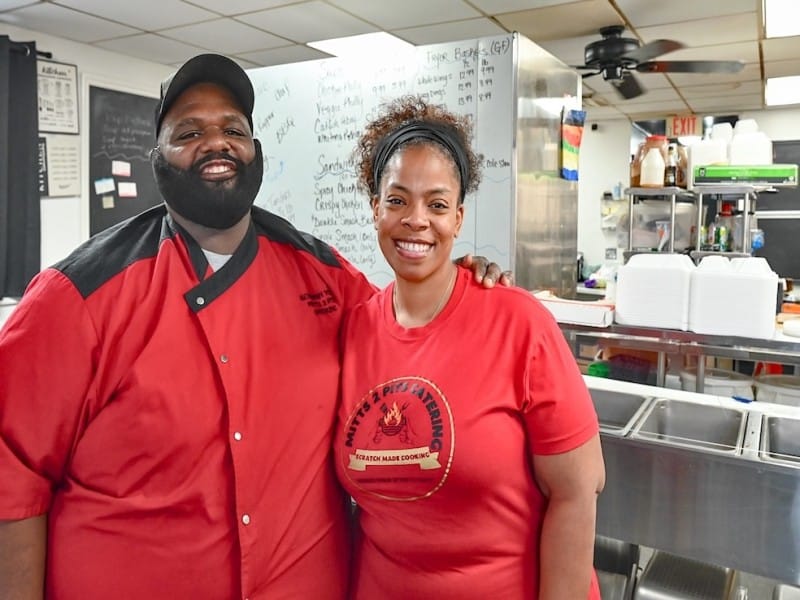Planting a playscape downtown, where getting wet and muddy is all part of the fun
A nature-inspired landscape inviting the kind of unstructured play that children want and need is in the works for downtown Kalamazoo.
Bronson Park in downtown Kalamazoo has more than 75,000 visitors a year, many of them young children. That’s to be expected, with 18 childcare and preschool locations within a 10-block radius of the park.
But there are scant opportunities there for kids to explore what it feels like to hang upside down, roll in the grass, dig in dirt, or splash in water, activities that build an appreciation of the world of nature.
When the park design was updated in 2015, its master plan didn’t factor in children at play, with a predictable result — kids may risk being scolded for acting like kids as they climb on features or romp through flower beds.
A fix is underway.
The new Children’s Nature Playscape on Bronson Park, going on the vacant lot where the Congregational Church once stood, will be a nature-inspired landscape inviting that kind of unstructured play.
Ideas for what the 130-foot square site should include have come pouring in from the public, says Jody Brylinsky, Ph.D., chair of the steering committee for the Children’s Nature Playscape on Bronson Park.
“While we are still very much in our design phase, we have had consistent feedback about wanting a water feature that will be similar to a stone and vegetation creek bed, a climbing area made from boulders and or tree trunks, a crawling area — probably with sand — a space to dig, a sensory space, balancing items, and as much free space with natural grass and plants as possible,” Brylinsky says. “We would very much like to have a set place for nature presentations or storytime that would provide an imaginative play zone as well.”
The playscape will be free to the public and both ADA-compliant and barrier-free. The grand opening is slated for May 2022.
First Congregational Church of Kalamazoo retains ownership of the actual site at 302 Academy Street. Operations are delegated to Children’s Nature Playscape’s board of directors.
Infrastructure for kids
The U.S. Census Bureau estimates 30,000 children under the age of 10 live in Kalamazoo County — that’s more than 11 percent of the county’s population.
Those who live in rural and suburban areas have trees to climb, streams to wade, and woodlots or explore.
But city kids don’t have the luxury of engaging with nature in the same freestyle ways.
The new playscape hopes to bring nature right downtown, a benefit to the entire community, not only its youngest members.
“The question of what constitutes infrastructure is still up for debate,” Brylinsky says, “but childcare and the wellbeing of our children is being talked about as essential to our national economy.”
In addition, she says, access to nature, or the lack thereof, is a public health issue. Kalamazoo has long recognized that we can reduce health disparities and improve physical and mental health by creating and promoting the use of natural areas where more children can learn and play, Brylinsky says.
“Our Playscape aligns closely with the city of Kalamazoo’s masterplan, ‘Imagine Kalamazoo.’ Among that charter’s primary goals,” she says, “is to be ‘A city with places and supports that help young people thrive.’ Our Playscape aims to do just that.”
Nature, with a touch of help
The committee envisions a community effort that will include donations of everything from natural materials and ideas to ongoing support and maintenance.
“We like to say we are going to ‘plant’ a play area rather than ‘build’ one,” Brylinsky says.
And while streams and climbing structures may be artfully engineered, the area hopes to retain some of the challenges of the wild, she says.
For instance, a log that was easy to walk on when dry becomes slippery when wet; some plants have thorns; bees that visit flowers may sting bare feet.
Those types of lessons of a natural world will be embraced, not erased.
“We may need to do some signage or some educational pamphlets so adults who bring their children understand the features and natural risks that are inherent to free play in the area,” Brylinsky says. “But research has suggested that these natural playscapes are actually less likely to cause serious injury than playgrounds.
“We are more interested in exposing children to nature that will provide opportunities for free play, creativity, socialization, and the inherent learning that only nature can provide. This also provides a unique play environment not readily available in our urban downtown.”
All seasons
It’s early days in planning, so ideas are still coming for making the playscape as inviting in winter as it is in the summer. In winter some features may have less access — the water feature may be turned off or some of the digging areas covered.
Still, organizers hope children will want to use the space as appropriate to play in the snow.
“This may be an example of where opening the discussion to the community can help us with suggestions we haven’t considered,” Brylinsky says.
Learning from the land, and each other
Bill Rose, a member of Children’s Nature Playscape steering committee, is the past Executive Director of the Kalamazoo Nature Center and was instrumental in building a nature playscape at that location. Nicole Blum, active in creating a smaller playscape in the Edison neighborhood, has advised the steering committee as well.
“Since we have been raising funds and preparing the site now for almost three years, there has been a lot of time to read, and dream,” Brylinsky says.
A few lessons they have learned along the way?
“We need to be sure to involve the community in our design so there is a feeling of ownership and that it meets the needs of the children,” she says. Also, because this is a project for the long haul, the playscape needs community partners not only to maintain the space but to step in and continue to help revitalize the space and programming.
Nature is the main ingredient
Another unique aspect of the project is the acknowledgment of its location on the traditional lands of the Match-E-Be-Nash-She-Wish Band of Potawatomi people, custodians of the land for thousands of years.
“We are still connecting with local tribal members to see how best to achieve our goals of fostering awareness and respect” of that history, Brylinsky says.
“I think the other thing I have learned at this point is that we will adapt as we grow in participation,” Brylinsky says. “We may add features, change layouts, or programming as we see the needs of the children change.
“One thing for sure is that less is more,” she says. “Nature is the main ingredient and given the space and opportunity, children will maximize whatever ‘grows’ in this space.”
How to help
The project is halfway to its fund-raising goals and seeks additional partners who are committed to the children and families of Kalamazoo and the environment.
“We can’t make this playscape goal a reality without the engagement of both for-profit and nonprofit organizations, as well as individual volunteers,” Brylinsky says.
To learn how you may help by partnering, donating or volunteering, or staying up to date on plans, click here.

